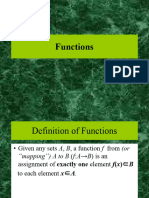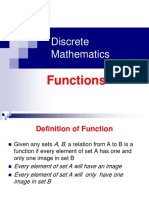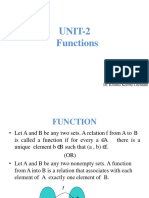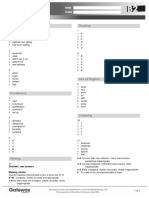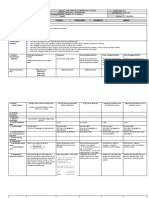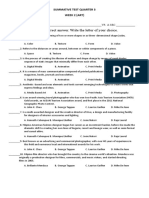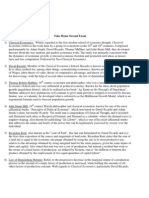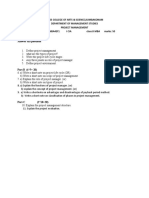0% found this document useful (0 votes)
270 views20 pagesFunctions Kenneth Rosen Book
The document defines and discusses functions. Key points include:
- A function f maps each element a in its domain A to exactly one element f(a) in its codomain B.
- Functions can be represented graphically in ways like bipartite graphs or plots.
- Important terminology includes domain, codomain, range, one-to-one, onto, and bijective functions.
- Special functions discussed are the floor and ceiling functions that map real numbers to integers.
Uploaded by
Zubair AlamCopyright
© Attribution Non-Commercial (BY-NC)
We take content rights seriously. If you suspect this is your content, claim it here.
Available Formats
Download as PPT, PDF, TXT or read online on Scribd
0% found this document useful (0 votes)
270 views20 pagesFunctions Kenneth Rosen Book
The document defines and discusses functions. Key points include:
- A function f maps each element a in its domain A to exactly one element f(a) in its codomain B.
- Functions can be represented graphically in ways like bipartite graphs or plots.
- Important terminology includes domain, codomain, range, one-to-one, onto, and bijective functions.
- Special functions discussed are the floor and ceiling functions that map real numbers to integers.
Uploaded by
Zubair AlamCopyright
© Attribution Non-Commercial (BY-NC)
We take content rights seriously. If you suspect this is your content, claim it here.
Available Formats
Download as PPT, PDF, TXT or read online on Scribd
/ 20






